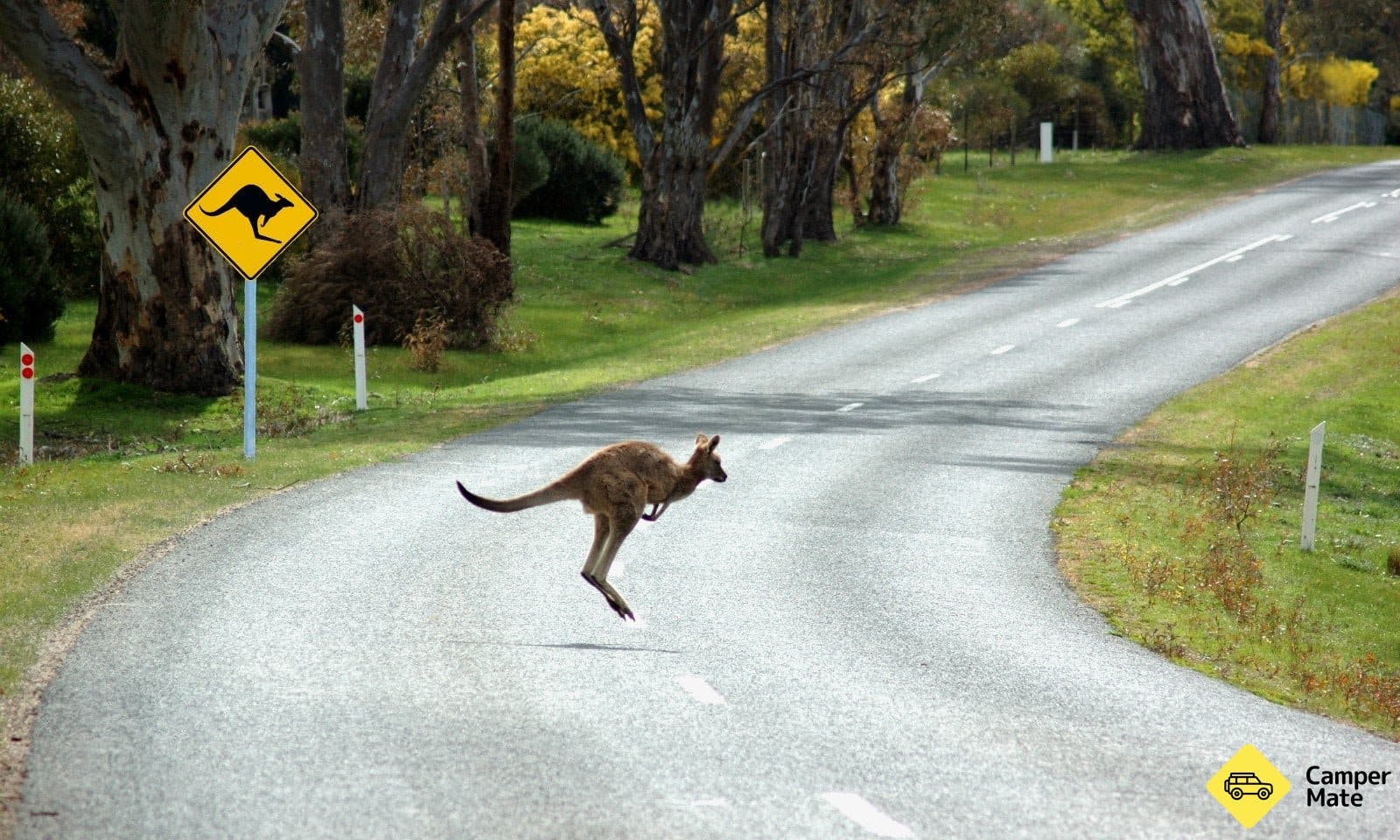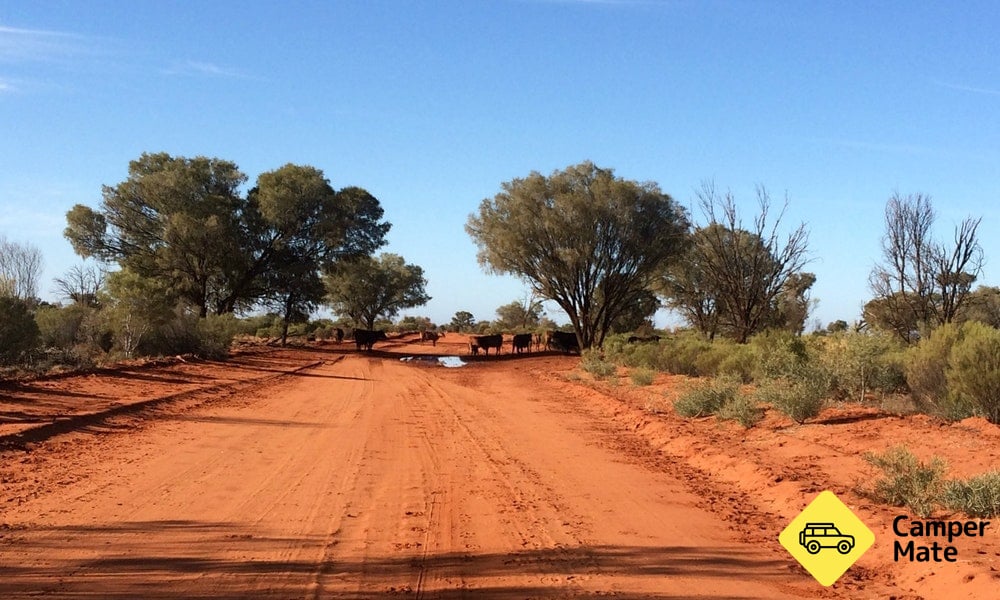
4WD
What to Do if You Hit a Roo
December 6, 2016 • The GoSee Team
5 min read
Travelling throughout Australia can be hazardous at times, other cars, trucks, pedestrians and animals sharing the road with travellers like ourselves. We are taught what to do if we have an accident with another vehicle, but what do we do if we are unfortunate enough to hit another member of the animal kingdom? What do you do if you hit a roo?
My first response is to be very worried about the animal in question – let’s be honest, the animal is likely to come off worst, usually either injured or dead. I know you can’t swerve to miss an animal in most situations, but being an animal lover, I get quite upset when driver and passenger safety demands I hold a steady course.
In my experience, accidents like these tend to occur around dusk, in areas that are surrounded by grasslands (where the animals congregate to feed). If travelling through this type of environment, it may pay to slow down and be extra vigilant for signs of animal habitation. Almost nothing gets my blood moving more than seeing a large macropod (the family that Kangaroos and Wallabies belong to) on the side of the road, quietly feeding. Where there is one, there is always more!
So, let’s go through some of the steps you should take if you hit a roo (or another member of the animal family).
If safe to do so, slow down and pull over to the side of the road. Watch for other vehicles in the area, and warn them of danger if required. A large animal in the middle of the road is dangerous, no matter their status.
Give WIRES a call
If the animal is a bat, snake, lizard, adult kangaroo, adult wallaby or large predatory bird, please do not approach the animal directly if still alive. These species require specialist handling and can become easily distressed. WIRES (NSW Wildlife Information, Rescue and Education Service Inc.) are trained in rescuing these animals in NSW and can be called on 1300 094 737, 24 hours per day. For accidents in other states of Australia, check out our list of wildlife rescue organisations by state below.
The WIRES website and app are excellent resources for identifying and understanding what to do for specific animals that are hurt.

Discover More: the great Australian road trip
If the animal is a kangaroo or wallaby, consider the possibility that it is a female with a baby. If the mother is deceased, you should look for signs of a baby in her pouch, or close by (as the baby may have been flung from the pouch during the accident). Sick or injured joeys need immediate care, and most vets will care for these animals free of charge, before handing them over to WIRES for rehabilitation. They should be kept warm and dry, and transported as soon as possible. Do not try to feed it.
Check your car for signs of damage. Larger animals such as kangaroos, wallabies and wombats have the ability to do a lot of damage to your car, especially the front bumper and undercarriage. I have seen cars completely written off after an accident with these beasts. Check your engine, radiator (being at the front, it’s most likely to have damage) and suspension. If the car is damaged, it is probably best not to drive it further until a mechanic has given you the all clear. Bull bars on the front do not preclude you from under car damage, so please make sure you are thorough with your assessment.
If the animal is dead and is on the side of the road, think about its location relative to other road users. Is someone else likely to hit it? If so, consider moving the animal further away from traffic. Also, think about other animals who may use the carcass for food, such as giant birds of prey. They too will prove to be a problem if they are in the middle of the road. Moving a dead animal further off the road is a good thing to achieve if possible, just remember to use gloves when you can and wash your hands thoroughly afterwards.
I hope you never have to come across these unfortunate circumstances, but as we continue to strip our forests and destroy habitats for human use, these scenarios are becoming more and more commonplace. But, with the help of wonderful organisations such as WIRES and Wildcare, maybe we can make the rescue and rehabilitation of injured animals that much easier.
Wildlife rescue and care organisations in Australia
Victoria: Wildlife Victoria, 1300 094 535
New South Wales: WIRES (NSW Wildlife Information, Rescue and Education Service Inc.), 1300 094 737
Queensland: Wildcare QLD, (07) 5527 2444
Northern Territory: Wildcare Inc., (08) 8988 6121
South Australia: SA Fauna Rescue, (08) 8289 0896
Western Australia: Wildcare, (08) 9474 9055
Tasmania: Bonorong Sanctuary, (03) 6268 1184
ACT: ACT Wildlife, 0432 300 033 (all species except kangaroos); RSPCA Wildlife, (02) 6287 8100, and Environment ACT via Canberra Connect, 132 281 (for kangaroos).

